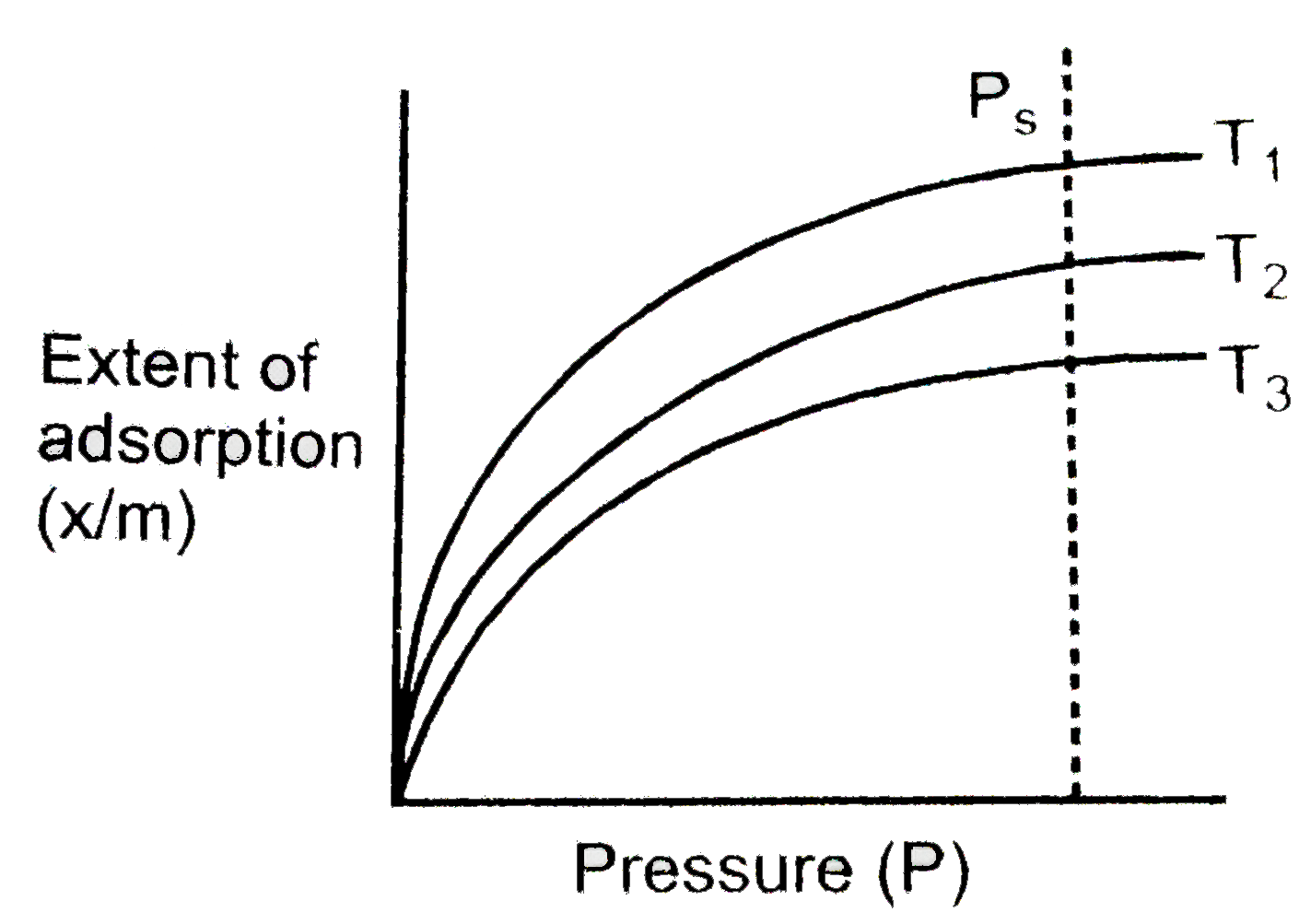For the reaction 2A→B+3C, if −d[A]dt=k1[A]2,−d[B]dt=k2[A]2,−d[C]dt=k3[A]2 the correct reaction between k1,k2 and k3 is :Solution in Punjabi
k1=k2=k3
2k1=k2=3k2
4k1=k2=3k2
k12=k2=k33
The correct Answer is:D
Step by step video & image solution for For the reaction 2AtoB+3C, if -(d[A])/(dt)=k_(1)[A]^(2),-(d[B])/(dt)=k_(2)[A]^(2),-(d[C])/(dt)=k_(3)[A]^(2) the correct reaction between k_(1),k_(2) and k_(3) is : by Chemistry experts to help you in doubts & scoring excellent marks in Class 12 exams.
Updated on:21/07/2023Topper's Solved these Questions
- CHEMICAL KINETIC & NUCLEAR CHEMISTRYBOOK - NARENDRA AWASTHICHAPTER - CHEMICAL KINETIC & NUCLEAR CHEMISTRYEXERCISE - Level 1 (Q.3 To Q.32)
1 Videos
- CHEMICAL KINETIC & NUCLEAR CHEMISTRYBOOK - NARENDRA AWASTHICHAPTER - CHEMICAL KINETIC & NUCLEAR CHEMISTRYEXERCISE - Level 1 (Q.33 To Q.62)
2 Videos
- SURFACE CHEMISTRYBOOK - NARENDRA AWASTHICHAPTER - SURFACE CHEMISTRYEXERCISE - Level -2
1 Videos
Similar Questions
The following data pertain to reaction between A and B
S.No[A][B]RatemolL−1molL−1molL−1sec−1I1×10−22×10−22×10−4II2×10−22×10−24×10−4III2×10−24×10−28×10−4
Which of the following interference(s) can be drawn from the above data
(a) Rate constatnt of the reaction 10−4
(b) Rate law of reaction is k[A][B]
(c ) Rate of reaction increases four times on doubling the concentration of both the reactant Select the correct answer codes:
a) a,b and C
b) a and b
c) b and c
d) c alone
View Solutioncolumn Icolumn IIP.Zero order reaction1.t1/2α1[A]0Q.First order reaction2.t100%=[A]0/kR.second order reactions3.Involves at least two reactantsS.Pseudo unimolecular reaction4.[A]=[A]0e−kt
View Solutionfor the graph below, select correct order of temperture ?

View SolutionMechanism of the reaction is:
Ak1−−→B,2Ak2−−→C+D
What is −d[A]dt ?
View SolutionFor the reaction,
N2O5→2NO2+12O2,Given
−d[N2O5]dt=K1[NO2O5]
d[NO2]dt=K2[N2O5]andd[O2]dt=K3[N2O5]
The relation in between K1,K2 and K3 is:
View SolutionFor the reaction 2A→B+3C, if −d[A]dt=k1[A]2,−d[B]dt=k2[A]2,−d[C]dt=k3[A]2 the correct reaction between k1,k2 and k3 is :
View SolutionConsider the following reaction, 2N_(2)O_(5)rarr4NO_(2)+O_(2),(d[NO_(2)] )/(dt)=k_(2)[N_(2)O_(5)] , (d[O_(2)])/(dt)=k_(3)[N_(2)O_(5)]" and "(d)/(dt)[N_(2)O_(5)]=k_(1) The relation between k_(1), k_(2) and k_(3) is
View SolutionFor a reaction 2NH_(3)rarrN_(2)+3H_(2) , it is observed that (-d(NH_(3)))/(dt)=k_(1)(NH_(3)),(d(N_(2)))/(dt)=k_(2)(NH_(3)),(d(H_(2)))/(dt)=k_(3)(NH_(3)) What is the reletion between k_(1),k_(2) and k_(3) ?
View SolutionFor the reaction, 2NO(g)+2H_(2)(g)rarrN_(2)(g)+2H_(2)O(g) the rate expression can be written in the following ways : {(d[N_(2)])/(dt)}=k_(1)[NO][H_(2)], {(d(H_(2)O))/(dt)}=k[NO][H_(2)], {(d[NO])/(dt)}=k_(1)'[NO][H_(2)], {(d[H_(2)])/(dt)}=k_(1)''[NO][H_(2)]. The relationship between k,k_(1),k_(1)' and k_(1)''
View SolutionAt a given temperature ,k1=k2 for the reaction,
A+B⇔C+D
If[dxdt]=k1[A][B]−k2[C][D] in which set o fthe concentration , the reaction ceases?
View SolutionFor the reaction, 2NH3→N2+3H2
if −d[NH3]dt=k1[NH3],
d[N2]dt=k2[NH3],d[H2]dt=k3[NH3]
then the relation between k1,k2 and k3 is
View SolutionThe reaction -rate of the reaction AB_(3)rarr(1)/(2)A_(2)+(3)/(2)B2 can be expressed by any one of the following equations : (-d[AB_(3)])/(dt)=k_(1)[AB_(3)], (d[A_(2)])/(dt)=k_(2)[AB_(3)] " or, " (d[B_(2)])/(dt)=k_(3)[AB_(3)] The ratio between k_(1) , k_(2)and k_(3) is -
View Solution3BrO^(-) to BrO_(3)^(-) + 3Br^(-) If -(d[BrO^(-)])/(dt) = k_(1) [BrO^(-)]^(2), +(d[BrO_(3)^(-)])/(dt) =k_(2)[BrO^(-)]^(2) + (d[Br^(-)])/(dt) =k_(3)[BrO^(-)]^(2) , the correct relation between k_(1),k_(2) and k_(3) is
View Solution2NH3→N2+3H2 என்ற வினைக்கு −d[NH3]dt=k1[NH3],d[N2]dt=k2[NH3]d[H2]dt=k3[NH3] எனில், k1, k2 மற்றும் k3 ஆகியவைகளுக்கிடையேயானத் தொடர்பு
View SolutionFor the reaction N2O5→2NO2+12O2, Given −d[N2O5]dt=K1[N2O5],d[NO2]dt=K2[N2O5] and d[O2]dt=K3[N2O4]. The relation in between K1,K2 and K3 is
View SolutionFor the reaction 2A→B+3C, if −d[A]dt=k1[A]2,−d[B]dt=k2[A]2,−d[C]dt=k3[A]2 the correct reaction between k1,k2 and k3 is :
View Solution
